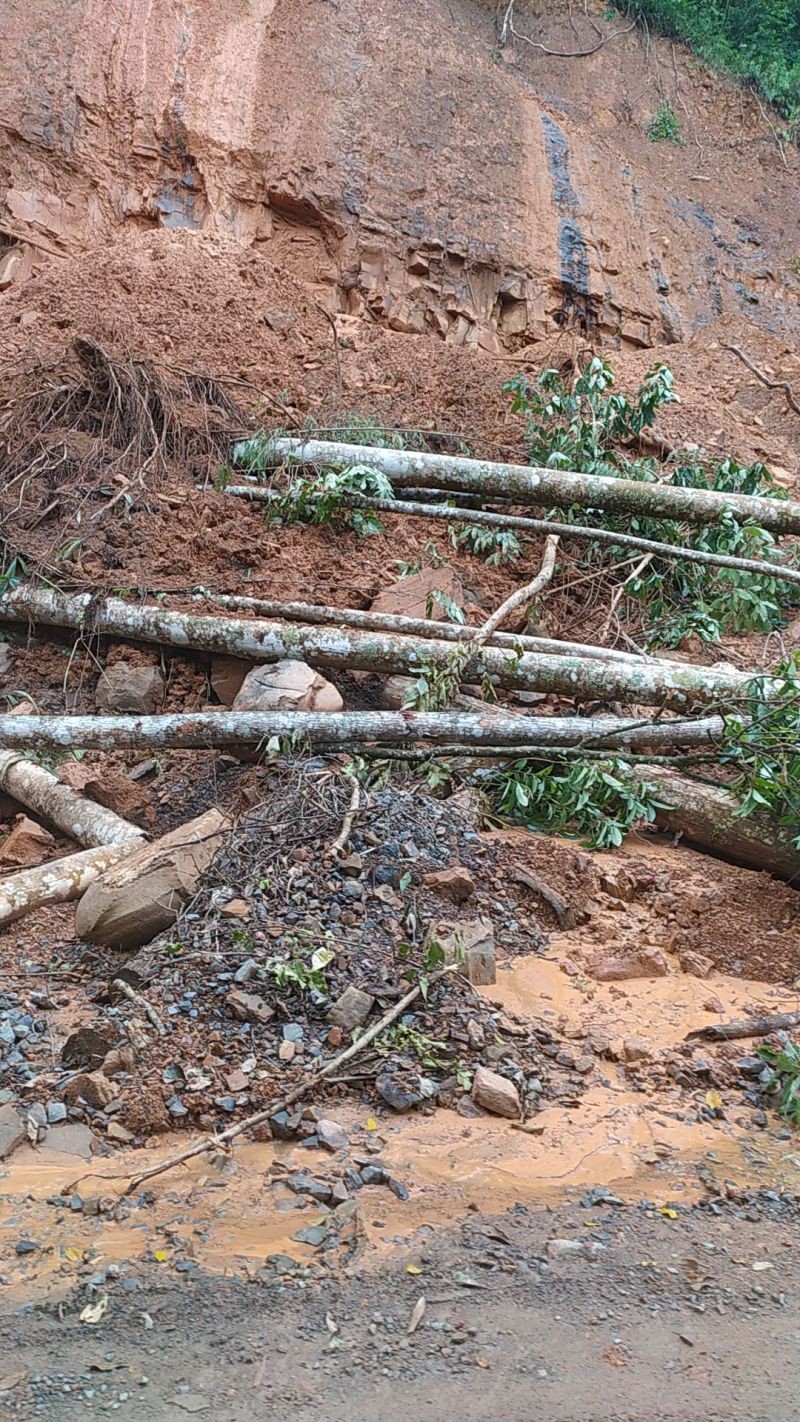Wokha road. (Morung Photo)

Mercy
Dept of Mass Communication
NU, Lumami
Nagaland is a land of captivating beauty, undergoes a transformative journey every year with the arrival of the Monsoon season. The average rainfall is between 1750mm and 2500mm. Most rain is received between June to September though rainfall occurs for about nine months of the year.
The Southern part gets heavier than the northern part of the state. The state being agrarian in nature all the agricultural activities depend on the South east monsoon. During the Monsoon season there were occasional floods of mild nature affecting major part of the plains and foothill areas of the state. Flood mainly causes damages to agricultural crops, livestock, transport and Communication and degradation of soil fertility.
The state had experienced drought like situations due to failure of South-east monsoon rain during the monsoon season. The erratic rainfall caused complete failure of agricultural crops due to delayed and consistent agricultural operations. Drought like situation in the past had caused shortage in food Crops productivity leading to severe food crisis and famine like situations all over the states. However, due to peculiar geographical location till date no official assessment for the entire state could be done.
A comprehensive critical analysis reveals that the monsoon’s impact stretches far beyond the mesmerizing rain showers, influencing agriculture, infrastructure, economy and daily life. The heavy rainfall although essential has turn into a double edged sword. The steep terrain of Nagaland leads to landslides and flash floods which pose risks to infrastructure, human settlements, and the delicate balance of ecosystem. Transportation becomes an intricate puzzle during the Monsoon months. The network of roads and pathways often grapples with the impact of rain-induced landslides, leading to disruption in connectivity between villages and towns.
While the rain is essential for agricultural activities in the state, excessive rainfall leads to soil erosion and water logging.
Agricultural Vulnerability:
Nagaland’s agricultural backbone faces a precarious situation during the monsoon. While the regions rice cultivation thrives on ample rainfall, excessive downpours trigger soil erosion, landslides and flooding. The outcome is a delicate balance between crop yields and loss, directly impacting farmer’s livelihood and food security. Recent reports from Nagaland Post highlight the damage to fishery ponds and paddy fields and crops following incessant rains in Jalukie town in Peren District. Besides, Heavy weeklong downpour in Phisami village under Kiphire has destroyed crops and fisheries.
Infrastructure’s perilous path:
Navigating Nagaland’s terrain becomes an arduous task during the Monsoon. Frequent landslides and road washouts disrupts transportation networks isolating communities and hampering trade. The Monsoon’s assault on extends its reach to power lines and Communication network, amplifying the challenges faced by the state’s development efforts. Tragic incident reported by NortheastLive, recount heavy rain triggered landslides and rockslides in Mokokchung district causing massive damage to property and disrupting traffic movement in the area. IndiaToday NE also cites and unfortunate incident due to heavy downpour, a massive rockslide occurred near the old check gate, Chümoukedima where three vehicles were crushed on the NH 29 killing 2 while injuring 3 persons.
Flooding:
Intense and prolonged Monsoon rainfall leads to floods, causing damage to homes and Infrastructure. Flash floods have resulted in loss of life, displacement and destruction of property. HornbillTv cites instances of flood affecting hundreds of families. In some areas vehicles were also submerged while most of the area remain inundated in waist deep water.
Health concerns:
Monsoon rains has created conducive environment for the breeding of diseases vectors like mosquitoes, leading to increased incidences of diseases like malaria and dengue. Poor sanitation and contaminated water sources leads to water borne diseases. NLTV also highlight rise of dengue cases and conjunctivitis (eye flu) among citizens of Wokha, Dimapur and Mon.
In conclusion, Nagaland’s Monsoon season transcends the boundaries of mere meteorological phenomenon, revealing itself as a profound force of nature that both nurtures and challenges. The Monsoon’s effects are a testament to the delicate balance between abundance and vulnerability.
As the rain cascades upon the land, it breathes life into the state's agriculture, replenishing the soil and sustaining livelihoods. However, this life-giving rain also wields the power to disrupt, triggering floods and landslides that test the resilience of both infrastructure and communities.






